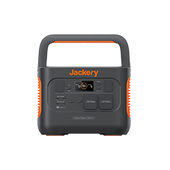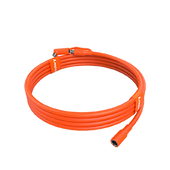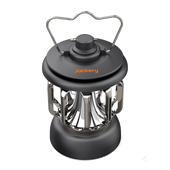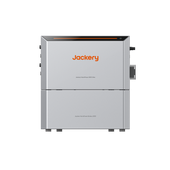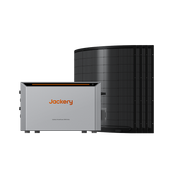The harvest festival across Europe will be celebrated between late September and early October this year. Though dates vary slightly from one country to another, the mood of gratitude for the season's offerings remains constant across the continent. As markets fill with fresh grains, fruits, and the first signs of autumn, communities prepare to celebrate traditions that have been practiced for centuries. This article provides an in-depth overview of the harvest festival in Europe, covering its history, culinary heritage, cultural activities, and the modern values that shape today's events. It also highlights how modern tools, such as Jackery's solar electric power station with solar panels, are helping farming communities keep these traditions alive in a more sustainable manner.
Historical Background on Harvest Celebrations in Europe
Harvest celebrations in Europe began long before the arrival of organized religion. Early farming societies marked the end of the growing season with rituals that honored the earth and the natural forces they believed controlled the harvest. Offerings of grain, animal sacrifices, and large communal gatherings were common, serving as both spiritual ceremonies and social events. These traditions reinforced the close relationship people had with the land and the seasonal cycles that governed their survival.
Today, many traditional customs have been transformed into new ones. In England, Lammas marked the first wheat harvest, when loaves baked from the new grain were blessed in churches. In Germany, Erntedankfest combined church services with parades and large community feasts. In Southern Europe, the grape harvest season became a defining feature, with wine pressing and processions woven into both cultural and religious life.
Archaeological discoveries and folklore point to the presence of even earlier practices. Stone circles and sacred groves once hosted seasonal rites, while Celtic and Slavic myths carried themes of fertility, renewal, and the turning of the seasons. In Scandinavia, the harvest was honored with mead and banquets that stretched late into autumn nights. Families in Eastern Europe decorated their homes with wheat sheaves, a symbolic tradition that continues in many places even today.
Culinary Heritage Associated with Harvest Festivals
Culinary traditions remain one of the most recognizable aspects of the harvest festival, offering seasonal dishes, drinks, and desserts that bring communities together and attract large numbers of cultural tourists. Here is what you can expect in terms of food at the harvest festival:
1. Seasonal Specialties
Food is central to the harvest festival, and the dishes reflect both the hard work of farmers and the joy of the season. Staples such as pumpkins, potatoes, and carrots are prepared in many forms, from warm stews simmered slowly to pies baked with spices or trays of vegetables roasted over open fires. Roasted meats such as pork, poultry, or wild meats like venison, rabbit, or pheasant are also prepared in abundance, symbolizing plenty at the end of the growing year.
2. Fermented Drinks
Drinks have always been part of the harvest table. In France and Spain, vineyards welcome the grape harvest with the first pressing, producing young wines that mark the start of the season. In England and Normandy, apple orchards provide fresh cider, a drink deeply rooted in local history. Germany celebrates the harvest with beer festivals, a tradition that reflects centuries of connection between brewing and farming life.
3. Regional Desserts
Sweets play a significant role in the harvest festival and often feature local produce. In Austria and Germany, apple strudels filled with fruit and spice are a seasonal favorite. Central and Eastern Europe prepare nut breads and walnut cakes that are baked especially for the festival period. In Italy, figs and chestnuts are transformed into simple yet traditional desserts that reflect the crops of the southern regions. Every region shapes its desserts differently, showing how closely food is tied to local culture.
4. Communal Meals and Food-Sharing Customs
During the harvest festival, sharing food is as meaningful as the cooking itself. Many villages organize large meals in town squares, churchyards, or farms where neighbors and visitors sit at long tables. Families often exchange loaves of bread, cakes, or jars of preserves as tokens of goodwill. These gatherings are an important part of the culture, helping the communities build trust and strengthening ties between households.

Fun and Immersive Experiences Found During the Harvest Festivals
Beyond food and rituals, harvest festivals are filled with a range of events and activities that bring communities together, creating a lively atmosphere for visitors. Here is what you can expect:
Parades and Traditional Costumes
Parades are one of the most visible parts of the harvest festival. Wagons are decorated with wheat, fruit, and flowers, and they move slowly through the streets. You will find people wearing traditional and historical costumes in large numbers. In some regions, animals are also dressed for the parade, and villages compete to see who can present the most creative floats.
Music and Folk Dancing
Music and dance bring energy to the festival. Folk bands perform songs that have been passed down through generations, while dancers in embroidered costumes show traditional steps that reflect farming culture. Audiences are encouraged to join in, and public squares often turn into large open-air dance floors. The day often ends with evening concerts, sometimes lit by lanterns or bonfires.
Harvest-Themed Games and Competitions
Harvest festivals often include friendly competitions ranging from pumpkin judging and baking contests to farm-themed races. In some regions, playful traditions such as cheese rolling, grape stomping, or apple bobbing bring families and visitors together. These events are lighthearted yet also serve as reminders of traditional farming practices. Children take part in their own games, which helps keep the festival inclusive for younger generations.
Agricultural Exhibitions and Craft Fairs
Agricultural exhibitions and craft fairs increase the appeal of the European harvest festival. Farmers bring livestock, tools, and freshly harvested produce to display, while artisans sell pottery, woven textiles, and woodwork. Visitors can often try foods directly from the producers or watch demonstrations of traditional skills such as weaving or bread-making. Some fairs also showcase vintage farming equipment, showing how agricultural practices have developed over time.
Family-Friendly Activities
For many, the festival becomes a memorable day with family, filled with activities that allow parents and children to enjoy traditions together. Storytelling, puppet shows, and theater performances are set up in many villages to attract children. Workshops and craft corners also allow children to create small items to take home. Petting zoos and small farm tours give them a closer look at animals and crops. These activities make the harvest festival a shared experience for all ages and help pass traditions on to the next generation.
Sustainability, Slow Food, and Organic Agriculture in Harvest Festival
Harvest festivals in Europe have evolved over time, and many events now place a strong focus on sustainability and responsible farming. Here are the modern-day themes that are being widely incorporated in the recent European harvest festivals.
Farm-to-Table Events
Many modern harvest festivals now feature farm-to-table dining as a main attraction. These meals show how local food can be enjoyed without long transport chains or heavy processing. Chefs work directly with nearby farmers to prepare dishes using seasonal crops and locally raised meats. These meals are often served in open-air barns or fields, helping visitors see the direct link between farming and food. Some events even reduce waste by serving meals on reusable or compostable plates, reflecting the growing effort to cut down on single-use materials in every possible manner.
Involvement of Local Producers and Artisans
Modern harvest festivals highlight local producers and emphasize the importance of incorporating sustainable practices into daily life. Markets often feature cheeses, breads, honey, oils, and preserves made with ingredients grown in nearby farms. These products are prepared using traditional methods that avoid large-scale industrial processing, which helps reduce waste and lower the environmental footprint. Alongside the food stalls, artisans present textiles, ceramics, and wooden goods created with low-impact techniques that have been used over the centuries. By supporting these artists and stalls, visitors contribute to the local economy, keep cultural traditions alive, and encourage more environmentally responsible production.
Workshops and Educational Booths
Workshops and educational spaces are now essential parts of the harvest season. Visitors can learn about composting, seed saving, or how to start a small organic garden at home. You will find discussions covering topics like biodiversity, food waste reduction, and sustainable farming practices that improve soil health. Families and schools are encouraged to take part in these discussions, helping younger generations understand the importance of protecting natural resources.
Eco-Conscious Farming Showcases
Farming demonstrations often highlight practices that protect the soil, reduce water use, and lower emissions. Visitors may see examples of organic crop rotation, composting systems, or irrigation methods that save energy and conserve resources. Renewable energy is also featured, with solar generators frequently used to power food stalls, workshops, and event spaces.
Jackery Recommendation: Jackery Solar Generator 3000 v2
The Jackery Solar Generator 3000 v2 is an extremely dependable and long-lasting power solution for farmers to meet their energy needs during the harvest festival. Here is what this solar power generator brings:
A Dependable Power Source for Farms
The Jackery Solar Generator 3000 v2 is designed to meet the energy needs of modern farming. With its 3,072Wh capacity and 3,600W output, it can handle tasks ranging from running irrigation pumps and water systems to powering electric tools during harvest. Unlike fuel generators, it delivers clean, quiet energy, which makes it practical for both everyday farm work and emergencies.
Battery Strength and Long-Term Reliability
Since the Jackery Solar Generator 3000 v2 utilizes advanced LiFePO₄ battery technology, it can operate for up to 4,000 charge cycles, providing farmers with nearly ten years of reliable use. Even after months in storage, it retains most of its charge, making it highly reliable during seasonal downtime.
Portable and Farm-Ready Design
Weighing just 27kg, including its battery packs, and compact compared to other 3kWh portable power stations with a complete solar panel set, this solar generator can be easily moved between barns, fields, or storage areas. Multiple output ports, including AC sockets and USB connections, provide flexible battery and power supply options for running tools, lighting, and communication devices across various parts of the farm.
Efficient Solar Charging for Agricultural Use
The battery for the Jackery Solar Generator 3000 v2 recharges quickly, either through a standard wall socket in under two hours or by using four Jackery's 200W solar panels, the Jackery SolarSaga 200W Solar Panels, in just 5.5 hours. Most farmers prefer the solar energy option since it allows them to recharge the solar power station directly during the festival while also powering their devices.
Supporting Sustainable Farming Practices
For farmers focused on sustainability, the Jackery Solar Generator 3000 v2 offers a practical alternative to fuel-powered machines. It can power essential tools such as irrigation pumps, lawn equipment, or refrigeration units needed to store fresh produce.
At farmers’ markets and local fairs, it keeps stalls, lighting, and cooling systems running, ensuring produce reaches consumers in the best condition. The same system can also provide clean energy for workshops, food demonstrations, or agricultural events, reducing reliance on noisy, emission-heavy generators.
By lowering costs and cutting emissions, it strengthens the move toward eco-friendly farming in the best possible manner.
Conclusion
The harvest festival remains one of Europe’s most enduring traditions, blending history, food, and community spirit with modern ideas of sustainability. It is not only a celebration of the season’s abundance but also a reminder of how farming, culture, and innovation continue to shape everyday life. With the support of clean technologies like Jackery’s solar generators, these festivals are finding new ways to honor the past while looking toward a sustainable future.























